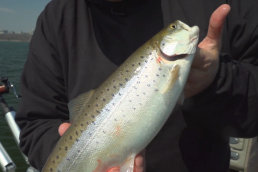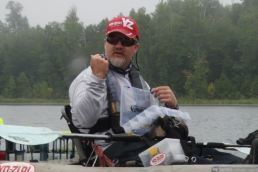Missouri Trout Fishing Tips
SHARE THIS POST
The season for Missouri trout park fishing opens in early spring. Riverbanks are wall-to-wall with anglers for the first few days. Then the crowds of opening day gradually disappear. Fishing for these little torpedoes remains excellent, however.
Classic trout fishermen typically throw very small flies. The fish’s vision is very acute. Certain environmental conditions call for the use of certain flys. Trout are sight feeders.
Using dry flies is not the only way to catch them, though. Their eyes are mid-range nsd they are comfortable looking up for food as well as down. They are multi-directional feeders.
Simple is good when trout fishing. Try natural bait. It is never too big. Trout have an amazing ability to consume large baits when it comes to natural ones. They are little Billy goats. If they are hungry, they are going to eat it. They often prefer only very tiny offerings, but it they are hungry, they will take almost anything in the tackle box. Especially larger, older trout.
Stream trout in the wild prefer moving water in the 40 to 55-degree range with a rocky bottom. They can survive in pond water but on a more limited basis.
On rivers where water levels change during the day, trout survive through adaptation. When the current is fast, they move near the edges of the river system. As water levels lower and current decreases, they go more toward the middle—or anywhere. They range through most of the river system relating to structure to conserve energy and preserve calories.
Trout have a lateral line, like all fish, and respond to movement, vibration and sound as well as sight. The lateral allows trout to pinpoint a direction from which those things emanate. They move toward that sound and use their sight to zero in on it.
Trout have tiny scales because they typically live in moving water environments. This, coupled with their slime coat, allows them to go nose-into the current with less energy. They are also very slippery to handle while landing them.
Southern Missouri has rainbow and brown trout. Rainbows are the prominent stocking fish because they are the easiest trout to grow. They take to the food, adjust to overcrowding and tolerate polluted water a bit better than brown trout.
There are two things to remember about trout taken from a hatchery and placed in any body of water. Where did that truck back up to? And what do you have a lot of in your tackle box? For about 3 days, stocked trout are stupid. They spend some time at the release site trying to get acclimated. They will bite anything. They do not have the instincts and intuition of a wild trout because they have never had to do anything for their meals.
Are you enjoying this post?
You can be among the first to get the latest info on where to go, what to use and how to use it!
Stocked lakes do not usually have a trout kill. Anglers remove most of the trout. Occasionally, someone catches a whopper in a lake where they have been stocking them for several years.
Spinning tackle is the main midwestern tackle for trout fishing. Out West, there is more fly fishing.
Use a relatively light rod to match your style of fishing. Light to medium-light action is best because it is very soft and limber. You can throw very small lures with it. Open-faced spinning reels allow the use of lighter line. It works well with 4- to 6-pound test line.
Most of the time, trout are going to respond to lures of 1 1/2 inch or less. In stained water, you might want to use something a little larger.
You can also get away with a little heavier line of 6- to 8-pound test in camo-green. You might add a 2-foot leader of 4-pound monofilament if you’re worried about spooking fish.
For lures, use anything from micro jigs on up. Rainbow trout and pink seem to go together. Red, brown and orange are good colors for brown trout.
Rig up a small jig by putting a bobber on your line 4 to 6 feet above it. It is not so much as a strike indicator but to give the line weight for casting. In clear water, a clear bobber is best. If you need to cast a long way, put some water in the bobber (plastic casting bubble) or add split shot to the line.
If you are getting short strikes because fish are attacking the feather portion of your jig, trim the tail a little, making thpresente ation shorter and closer to the hook.
Adjust the bobber according to the water depth you want to fish.
Straight-shaft spinners catch more trout than any other class of artificial. A spinner is basically a piece of metal that rotates around a wire shaft. It creates visual flash and a good deal of vibration. Fish pick up the vibration through their lateral line and come from a long way away. In clear water, the flash is a big advertisement.
The best way to handle a trout if you plan to release it is to grab the lure without touching the fish, and with the fish still in the water. If you use a net, get one that is very fine mesh. Large mesh will damage the fish. Dunk the net before using it to hold the fish. Leave the net in the water as you remove the lure. Forceps are best for removing lures.
MWO
SHARE THIS POST
Did you enjoy this post?
You can be among the first to get the latest info on where to go, what to use and how to use it!
Don Gasaway
Don Gasaway is a veteran freelance outdoor writer from Marion, Ill. He may also be found at: https://www.facebook.com/DonGasawayWriter and facebook.com/Wandering Angler. Comments are welcome



